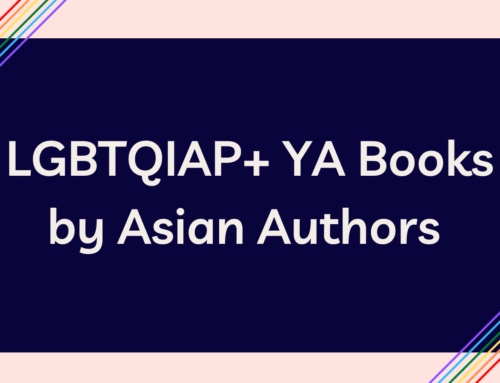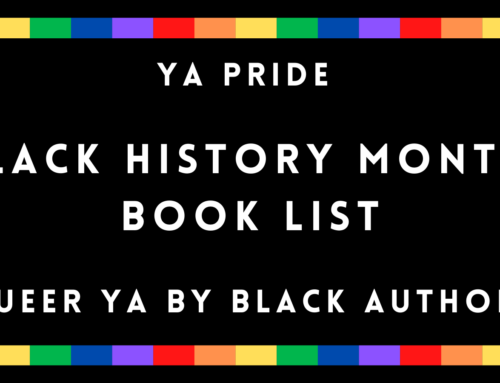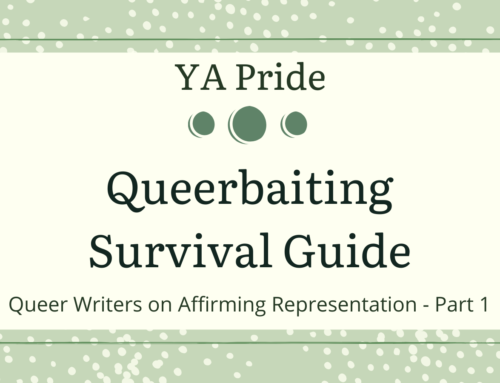I wasn’t planning on posting this resource this week. And then, well, this election happened. As a queer teen, I am more scared than I have ever been in this country. And I’m white. My friends who are LGBTQIA+ and people of color… they’re terrified. We need safe spaces now more than ever. I know this election has been a wake up call for many people that we need to do better, so I hope this post can help give some direction to that energy.
Teachers, librarians, booksellers, I know a lot of you are scared. LGBTQIA+ content is still seen by many as controversial or inappropriate. You may be worried about backlash, worried about your career. But I implore you to think about the teens you serve. The fear that you feel is infinitesimal compared to theirs. The risk you take in buying an LGBTQIA+ book for your classroom is small compared to what we risk simply by being alive.
We need you.
So, with that said. Here are my thoughts on how to use literature to make your library, classroom, or store a safe space for LGBTQIA+ YA teens. In my mind, there are four main components of a LGBTQIA+ friendly collection: 1) books that are obviously queer, 2) contemporary books that tackle identity/coming out, 3) books that don’t focus on identity and 4) books that cover the entire range of identities under the LGBTQIA+ umbrella.
Below, I expand on what I mean, and offer book suggestions. These are not meant to be comprehensive lists, and there plenty of other amazing LGBTQIA+ YA books out there. That said, if you think there is a book missing– especially if it is written by a person of color– please let me know in the comments, on Twitter @thegayya, or by email (vee@gayya.org).
1) Books that are obviously queer, such as Two Boys Kissing by David Levithan or About a Girl by Sarah McCarry. Both feature same gender couples kissing on the cover. Not everyone will be comfortable/safe reading these, but having them there and visible can have a huge impact.
2) Contemporary books that tackle identity and/or coming out. While it’s necessary to have books where queerness/transness doesn’t impact the plot, it’s also vitally important to have books that focus on it. To quote David Levithan’s Two Boys Kissing, “even though it’s better now, doesn’t mean it’s always good.” Being LGBTQIA+ still has its unique difficulties and joys, and it’s extremely validating to see those reflected.
- Under the Lights by Dahlia Adler
- Simon vs the Homo Sapiens Agenda by Becky Albertalli
- Georgia Peaches and Other Forbidden Fruit by Jaye Robin Brown
- Tell Me Again How a Crush Should Feel by Sara Farizan
- The Great American Whatever by Tim Federle
- Symptoms of Being Human by Jeff Garvin
- The Five Stages of Andrew Brawley by Shaun David Hutchinson
- Radical by E.M. Kokie
- You Know Me Well by David Levithan and Nina Lacour
- Beautiful Music for Ugly Children by Kirstin Cronn-Mills
- Juliet Takes a Breath by Gabby Rivera
- If I Was Your Girl by Meredith Russo
- Aristotle and Dante Discover the Secrets of the Universe by Benjamin Alire Sàenz
- More Happy Than Not by Adam Silvera
3) Books that don’t focus on identity: These are important for a couple different reasons. Having books that feature characters going on adventures or doing things that are unrelated to their identity is SO IMPORTANT. Especially for teens who are struggling, they serve as a reminder that there is more than this, that their life will not always be this way. In addition to that, teens who might not actively seek out LGBTQIA+ books (for whatever reason) may stumble across them. Lastly, some of these books are “covertly” queer, meaning that you can’t tell by the cover or blurb that they feature LGBTQIA+ characters. Teens who may have unsupportive friends or family members can feel safe reading these books. Covertly queer books are marked with a *. So! Some good books that don’t focuse on identity are:
- Wonders of the Invisible World by Christopher Barzak*
- Love in the Time of Global Warming by Francesca Lia Block*
- The Scorpion Rules by Erin Bow*
- Labyrinth Lost by Zoraida Cordova*
- Otherbound by Corinne Duyvis*
- Willful Machines by Tim Floreen
- We Are the Ants by Shaun David Hutchinson
- Run by Kody Keplinger*
- Not Your Sidekick by C.B. Lee
- Adaptation by Malinda Lo
- Huntress by Malinda Lo
- Proxy by Alex London*
- A History of Glitter and Blood by Hannah Moskowitz*
- When the Moon Was Ours by Anna-Marie McLemore
- This is Where it Ends by Marieke Nijkamp*
- Last Seen Leaving by Caleb Roehrig*
- Far From You by Tess Sharpe
- The Abyss Surrounds Us by Emily Skrutskie*
- A Darkly Beating Heart by Lindsay Smith
- Afterworlds by Scott Westerfeld*
4) Inclusion of identities across the entire LGBTQIA+ spectrum. Teens are starting to identify along a wide, wide range of identities. It’s so important to make sure your collection features more than gay and lesbian characters. Fiction hasn’t quite caught up to the multitude of identities yet, but here are a few that include underrepresented identities:
- Quicksilver by R.J. Anderson
- Brooklyn, Burning by Steve Brezenoff
- The Unintentional Time Traveler by Everett Maroon
- Clariel by Garth Nix
- This Song is (Not) For You by Laura Nowlin
- Seven Ways We Lie by Riley Redgate
- Lizard Radio by Pat Schmatz
In addition to those four main tenants…
Books with side LGBTQIA+ characters. Much like books that don’t focus on identity as a center point, these books are vital to standardize the presence of LGBTQIA+ characters and people. Some of my faves:
- Stranger by Sherwood Smith & Rachel Manija Brown
- Love Letters to the Dead by Ava Dellaira
- On the Edge of Gone by Corinne Duyvis
- The Chaos by Nalo Hopkinson
- Exit, Pursued by a Bear by E.K. Johnston
- Hold Still by Nina Lacour
- The Rest of Us Just Live Here by Patrick Ness
- Shadowshaper by Daniel Jose Older
- Serpentine by Cindy Pon
- Gabi, a Girl in Pieces by isabel quintero
Graphic Novels. Not everyone likes novels, so having LGBTQIA+ content available in other formats is important!
- Young Avengers by Gieron Killien
- Giant Days by John Allison
- Nimona by Noelle Stevenson
- Princeless: Raven, The Pirate Princess by Jeremy Whitley
Other things to consider while building your collection:
- Intersectionality. Make sure the LGBTQIA+ characters aren’t all white, able-bodied, neurotypical & middle/upper class.
- #OwnVoices. While I believe that straight, cisgender people can write LGBTQIA+ books, having books that are written by an author who identifies the same way as the character can be so unbelievably affirming. In addition to having a great story, there’s also this feeling of “they made it, so maybe I can too.”
- Balance. There should be fluffy, happily-ever after books, and ones that dig into hard stuff. There should be a mix of contemporary and SF/F. There should also be a balance of genders– make sure you have girls, guys, and some nonbinary characters!
- Keep it current. If you have the means, it’s always best to continue collecting new books as they’re published, and cycling out some of the older ones. I often see LGBT+ collections solely made up of books that were published in the 2000s. At a certain point, they just become unrelatable. They’re much MUCH better than nothing, but, if you have the means, continuing to collect new releases is really great.
- Representation. This one can get a bit tricky because not everyone agrees on what good or bad representation is. However, a few things that most people agree counts as bad representation: if one of the LGBTQIA+ characters dies, or if an LGBTQIA+ character is used as a learning tool for a straight and/or cisgender character. (Frex: Luna by Julie Anne Peters, Almost Perfect by Brian Katcher, Winger by Andrew Smith. For more on why books like this are problematic, see this post.)
Lastly, here are two posts by two brilliant librarians with more specific tactics:
LGBTQIA+ Books and Libraries: Helping Queer Kids Find the Stories They Need by Amanda Macgregor
How To Make Your Library a Safe Space for Queer Teens by Angie Manfredi
If you have any questions at all, email me at vee@gayya.org, leave a comment, or tweet us @thegayya. Let me know if this was helpful, or what you think would be helpful. Is there something more we can do to help you help teens? Let us know. I am here for you. We are here for you. Just, please, be there for us.
-Vee S., admin and co-founder of GayYA




